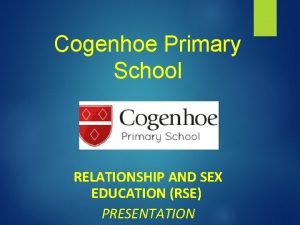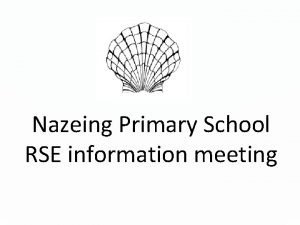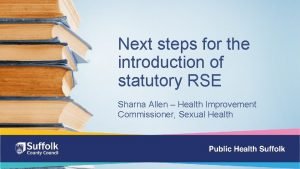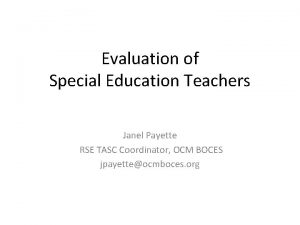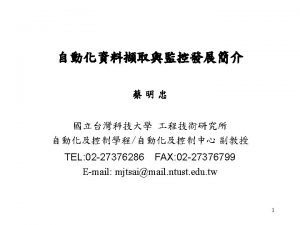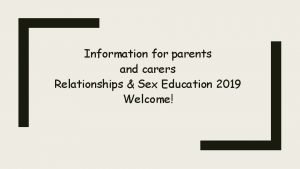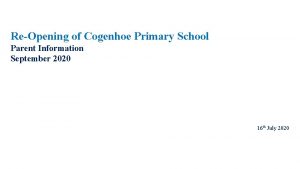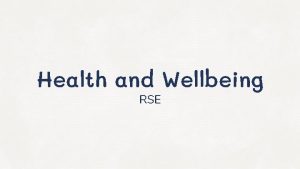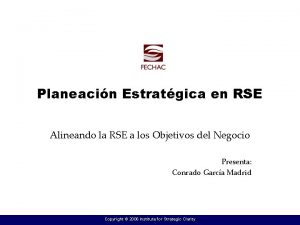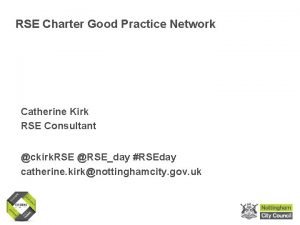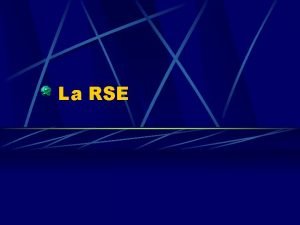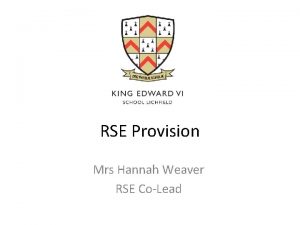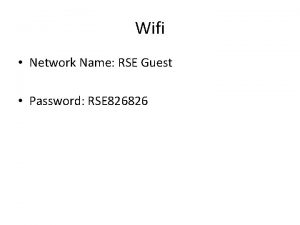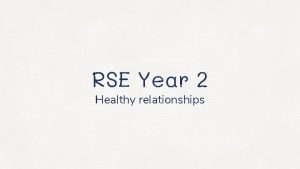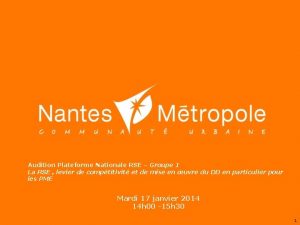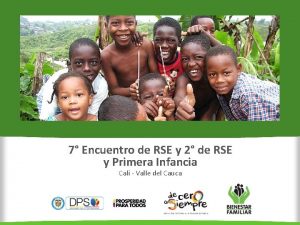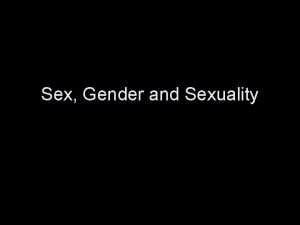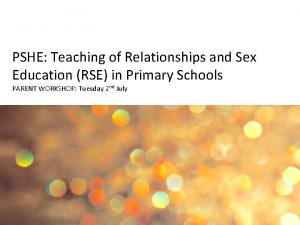Cogenhoe Primary School RELATIONSHIP AND SEX EDUCATION RSE














- Slides: 14

Cogenhoe Primary School RELATIONSHIP AND SEX EDUCATION (RSE) PRESENTATION

v What is RSE? Relationships and Sex Education v What is SCARF? SCARF gives us everything we need to meet the new Relationships and Sex Education requirements, statutory from September 2020.

https: //www. coramlifeeducation. org. uk/scar f/dfe-relationships-health/

• RSE is the life long learning about physical, moral and emotional development. • It is the understanding of the importance of marriage for family life, stable and loving relationships, respect, love and care. • It is also about the teaching of sex, and sexual health. (Year 5 and 6)

RSE at Cogenhoe RSE forms a part of the PSHE, RE and Science Curriculum Science, PSHE, RE and RSE will have overlapping areas Our key objective is the well-being of the child Parents have the right to withdraw their children from elements of RSE education. Relationships lessons are statutory, but you have the right to withdraw your child from the Sex education lessons, through verbal or written communication with the class teacher We believe parents are the prime educators of their children The school and families will work together; our role as a school is to support you.

What will SCARF RSE look like in each year group? https: //www. coramlifeeducation. org. uk/scar f/learning-outcomes/

Preschool Children begin to know and understand that they are part of the world. Examples of Preschool activities: Focus on different parts of their body and understand their own and each others features Observe facial expressions Identify the signs of feeling happy and sad

Reception Examples of Reception activities: Discuss how we are different from one another Identify who they play with and what they enjoy doing Look at the different types of friends they have Describe how to be a good friend Discuss what makes us feel safe and what to do when we do not

Year 1 Examples of Year 1 activities: Talk about who is in their family Talk about how fast babies change and grow Look at happy and sad moment within a family How is love shown in a family?

Year 2 Examples of Year 2 activities: What is community? Explore school as a community How can we contribute to the community? How to keep and feel safe Discuss feelings and how are feelings can affect others The different stages of growth in the life cycle. Changes from baby to adult (puberty is NOT taught). Identify different stages of growth (e. g. baby, toddler, child, teenager, adult); Understand describe some of the things that people are capable of at these different stages.

Year 3 Examples of Year 3 activities: Who cares for me at home, school, community? How do you keep safe? How do you take care of others? How do you feel if a friend is not there for you are not there for them? Children will be able to: Understand what is meant by the term body space (or personal space); Identify when it is appropriate or inappropriate to allow someone into their body space; Rehearse strategies for when someone is inappropriately in their body space.

Year 4 Children know and understand that they are all different and celebrate these differences. Examples of Year 4 activities: Children will be able to: Identify parts of the body that males and females have in common and those that are different; Know the correct terminology for their genitalia; Understand explain why puberty happens. Recognise all pupils grow and develop at a different rate Identify the development of the baby in the womb Look at how pupils appreciate their own and others gifts, talents, achievements and all that makes us unique.

Year 5 Children know and become aware of the physical and emotional changes that accompany puberty- sensitivity, mood swings, anger, boredom, etc. Examples of Year 5 activities: Identify and celebrate the ways I have changed since birth Discuss the external and internal changes which happen to boys and girls in puberty- pupils may be divided into male and females and taught separately for this section of the unit Recognise behaviour changes as we grow up Identify that physical changes from child to adult means the ability to become a mother or father Reflect on ways to become more sensitive to the emotional development of oneself and of others

Year 6 https: //www. coramlifeeducation. org. uk/scar f/lesson-plans/making-babies-1 Children develop, in an appropriate way for their age, an understanding of sexuality and grow further in their appreciation of their dignity and worth. Examples of Year 6 activities: Explain how human life is conceived Recognise male and female reproductive organschildren may be separated into males and females for this section Understand how a child grows within the mother’s womb the importance of Internet and Mobile Safety, through discussions about Social Media and texting – such as Sexting.
